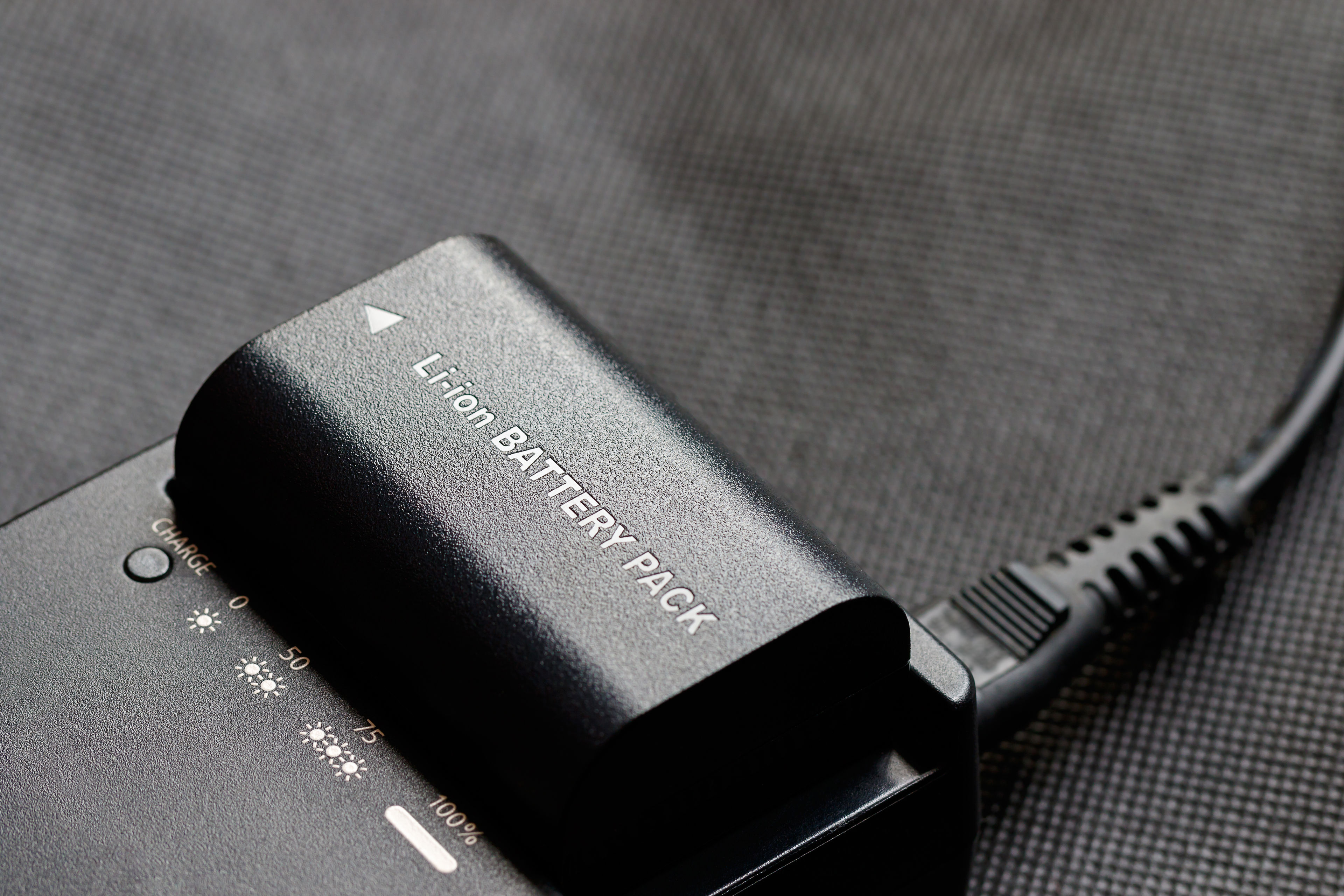- Material recycling
- Plastic
- Paper
- Electronics
- Metals
- Batteries
- Vehicle batteries
- Hazardous waste
- Alternative raw materials
- Industry solutions
- Manufacturing
- Public sector
- End-of-life vehicles
- Automotive
- Retail
- Process industry
- Infrastructure
- Recycling services
- Waste collection and recycling
- Total waste management
- Outsourcing
- Demolition
- Reuse
- Confidential services
- Insights & Inspiration
- Guides & Articles
- Videos
- Events

News & Insights
The battery product life: trends and initiatives in the value chain
Join us for the story on steps and solutions to make the most of lithium-ion batteries.
1 - Designing for a circular economy
It's about getting it right from the start and thinking about the whole product lifecycle. Already in the design of a battery, manufacturers can ensure that it can be recycled and reused simply and efficiently in the future.
Trend: The forthcoming EU battery legislation sets out several requirements for new batteries to contain recycled materials, making reuse and recycling easier. More and more companies have clear goals to reduce their carbon footprint, and product development has an important role to play in achieving this.
Solution: Learn more about circular product design with Stena Recycling's expert.
2 - Manufacturing with reduced climate impact
Using recycled materials reduces the carbon footprint of the battery. The reason is that it is more climate-smart to use raw materials made from recycled materials instead of the planet's pristine resources.
Trend: Electrification is growing at an accelerating pace. There is a global hunt for the limited amount of raw materials needed to produce lithium-ion batteries.
Solution: Millions of tonnes of recycled materials are produced every year at Stena Recycling's recycling facilities. The raw materials help companies reduce their climate impact. Through various initiatives, we can produce more raw materials needed for further electrification.
3 - Product use - meeting consumer demands
Trend: Consumer expectations about sustainability are increasingly influencing their purchasing decisions. Batteries that contain recycled materials and are easy to recycle help manufacturers attract customers. In a Stena Recycling survey of 5,000 consumers, 92% said they expected manufacturers to use more recycled materials. 86% considered it important to know that a product can be recycled.
4 - Collection, transport, and traceability
The safe handling of batteries is important to prevent fires, for example, wherever batteries are handled.
Trend: Traceability is a major part of the EU legislative proposal, including a proposed battery passport where information about the battery is collected. It will cover everything from material content to instructions for transport and proper recycling.
Solution: With 178 recycling facilities, we can collect batteries and other waste from 100,000 customers in all kinds of industries. Dedicated battery centers are established in all our markets.
With the right collection equipment, batteries can be handled and transported safely. In Sweden, Stena Recycling cooperates with some twenty large recycling centers for the early separation of battery-operated products from households. This enables more efficient and safer recycling in the next step. Another example is Safebox , a robust steel box we have developed to transport car batteries safely. The handling of the battery is documented for good traceability.
5 - Sorting for reuse or recycling
Used batteries can be handled in different ways. They can be used for reuse where product life is extended or go directly to recycling.
Trend: The challenging shortage of electricity capacity in society is an important reason for the more reuse of batteries in energy storage. The EU wants to stimulate more reuse and recycling to protect the battery materials of the future. The expected requirements will affect both the manufacturing industry and recyclers.
Solution: At Stena Recycling's Battery Centers, the performance of batteries is assessed. If they are in good condition, automotive batteries can have a continued product life and be used for reuse. The battery is recycled if it is exhausted.
6 - Discharge and dismantling
A used car battery can contain up to 600 volts, almost twice as much as we get in normal plugs. Safety is therefore important at every stage.
Trend: Fires caused by lithium-ion batteries are on the increase. The EU legislative proposal requires manufacturers to provide batteries with information to help ensure safe handling and recycling.
Solution: At Stena Recycling's Battery Centers, batteries are de-energized using stringent safety rules while the expertise of our employees is a key factor. Battery casings are dismantled and plastics, metals, and other materials are recycled.
7 - Recycling - raw materials for new batteries
Recycling processes determine how much material is extracted and can be used for new batteries. Raw materials must be of high quality and replace more materials made from virgin materials.
Trend: Both companies and regulators are driving the development of increased battery recycling. Read more about the EU's requirements for increased recycling here.
Solution: Stena Recycling is implementing several initiatives to develop battery recycling. In Halmstad, a facility is being built to recycle lithium-ion batteries from both vehicles and electronics. The plant will extract black mass, a material mix of cobalt, lithium, nickel, and other battery materials, from batteries from customers throughout the Nordic region, Poland, Germany, and other parts of Europe. The best available technology will be used in the process. The plant is also scalable for growing battery volumes in the market.
Through a collaboration with external parters, the materials can be refined with advanced chemical processes and become quality raw materials for the production of new batteries.
8 - Old battery becomes a new battery
The use of recycled materials contributes to a reduced carbon footprint in the production of a new battery. In addition, we can conserve raw materials that are in limited supply on the planet. Recycling, therefore, helps to ensure that cobalt, lithium, nickel, and other important battery materials will last into the future.
Trend: The EU wants to require greater use of recycled raw materials in new batteries. As early as 2027, the EU wants to see transparent information on how much recycled cobalt, lithium, nickel, and lead are used in a new battery. The requirements on the amount of recycled material used are proposed to increase significantly between 2030 and 2035.
Solution: Through a global network, Stena Recycling sells recycled materials to proven buyers.
For further information

The battery product life: trends and initiatives in the value chain
Using lithium-ion batteries is a great resource for manufacturing new ones. But it's important to manage them properly throughout their product life. From designing them to recycling the materials. Are you in control of your batteries?

Answers from our experts - the future of battery recycling
We received many interesting questions from the audience attending The Future of Battery Recycling webinar. Here we have collected all the questions and answers. The answers are provided by the experts who participated in the event and Stena Recycling's R&D department.
Share article





